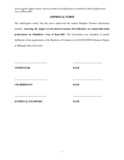Please use this identifier to cite or link to this item:
https://cris.library.msu.ac.zw//handle/11408/2517Full metadata record
| DC Field | Value | Language |
|---|---|---|
| dc.contributor.author | Matipira, Terrence | - |
| dc.date.accessioned | 2017-07-05T07:17:51Z | - |
| dc.date.available | 2017-07-05T07:17:51Z | - |
| dc.date.issued | 2014 | - |
| dc.identifier.uri | http://hdl.handle.net/11408/2517 | - |
| dc.description.abstract | Introduction: Traditionally, commercial banks generate their profits from the difference between interest from lending and interest granted to the depositors. However following financial liberalization, deregulations and increased competition from non-financial intermediaries, banks have since diversified from their traditional ways of making profits into non-traditional ways/noninterest income generating activities. Statement problem: The blurred effects of diversification into non-interest income was revealed by the end results of Memorandum of Understanding (MoU),banks were regulated to charge stipulated rates on non-interest income activities namely: cash withdrawals, time deposits, ledger fees, maintenance and services and automated teller machines transaction charges. This regulatory policy was followed with mixed results, with some banks recording increased margins of profits; whilst other banks announcing loses. This brought a perplexing question on how can one well produce both salt and sweet water? The relationship between profitability and activities generating non-interest income is not straightforward in sense that the diversification strategy can either increase profits or end up contributing to operational costs of the bank. This prompted the researcher to investigate on the impact of non-interest income diversification on commercial bank performance. Methodology: The study used a case study mixed research design that incorporated both qualitative and quantitative analysis. In this study a regression model was used to investigate the relationship between dependent and independent variables using E-Views 7 a statistical package, the analysis was done at 95% confidence level. The researcher employed a convenience and judgmental sampling techniques because the search only targeted acquainted individuals. The researcher used a coded excel questionnaire that was administered through e-mail to targeted respondents. The data was analysed using t-statistics analysis, correlation analysis and regression analysis. Results: The study established that diversification into non-interest income is associated with increased commercial bank performance represented by profitability. However the study also revealed that diversification into non-interest income is allied with increased levels of operational costs. | en_US |
| dc.language.iso | en | en_US |
| dc.publisher | Midlands State University | en_US |
| dc.subject | Profits | en_US |
| dc.subject | Commercial banks | en_US |
| dc.title | Assessing the impact of non-interest income diversification on commercial bank performance in Zimbabwe: case of BancABC | en_US |
| item.fulltext | With Fulltext | - |
| item.languageiso639-1 | en | - |
| item.grantfulltext | open | - |
| Appears in Collections: | Bachelor Of Commerce Accounting Honours Degree | |
Files in This Item:
| File | Description | Size | Format | |
|---|---|---|---|---|
| thelma dissertation.......pdf | Full Text | 3.32 MB | Adobe PDF |  View/Open |
Page view(s)
62
checked on Aug 31, 2024
Download(s)
106
checked on Aug 31, 2024
Google ScholarTM
Check
Items in MSUIR are protected by copyright, with all rights reserved, unless otherwise indicated.


